Summary:
- Both Coke and Pepsi are Dividend Kings having paid increasing dividends for at least 50 years.
- Pepsi’s revenue is more than twice Coke’s.
- Pepsi has raised its dividend twice as fast as Coke over the last 5 years.
Hitra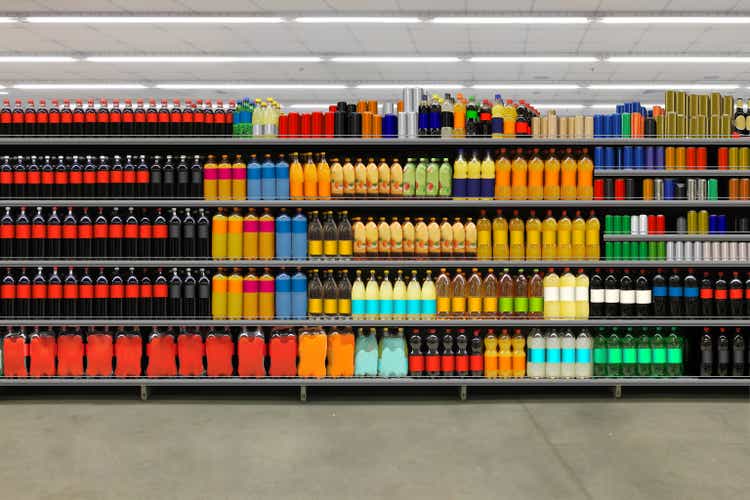
Overview:
The Coca-Cola Company (KO) and PepsiCo Inc. (NASDAQ:PEP) have ruled the American beverage world for over 100 years. Both companies are in the top 5 in market value for beverage companies with Coke being number 2 and Pepsi being number 3.
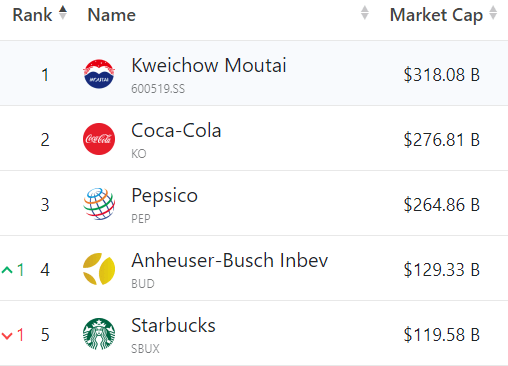
companiesmarketcap.com
If you don’t recognize number 1, Kweichow Moutai, it is a Chinese liquor company.
Both Coke and Pepsi are icons of American business and especially in the realm of marketing prowess. Coke was founded in 1893 and Pepsi in 1896.
Over the last year, PEP’s price has outperformed KO by about 14%. It has also outperformed Coke over the last 3, 5, and 10-year periods.
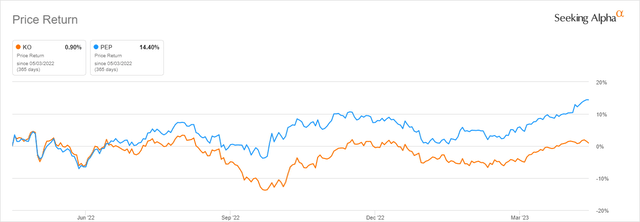
Seeking Alpha
In this article, we will analyze both companies’ history and the potential advantages of each company as an investment for capital gains and dividends over the next year.
Financial metrics
A major part of the decision-making process in selecting stocks and dividend stocks in particular is the company’s future viability. How likely are they to have the financial ability to at least keep the current dividend intact and better yet increase it each year going forward?
When we look at the financial metrics comparing the two companies on a TTM (Trailing Twelve Month) basis, several metrics should be noted. The first one is the Price/Sales ratio (Line 3) which shows KO with a ratio more than twice PEP’s ratio of 6.4x to 3.0x. This could imply that PEP is a better value than KO.
And note that PEP’s Revenue (Line 2) is more than double Coke’s.
The Gross Margin % (Line 5) for both companies is large with Coke winning at 58% to 53%. Large margins such as these indicate both companies have the potential to generate huge cash flows and subsequently dividends. But based on GM to Market Value Percentage (Line 8), PEP’s margin is much higher than KO’s 18% to 9%. Again, this may indicate that PEP is a better value based on market value.
When it comes to EBITDA (Line 13), KO looks much better with $13 billion vs $15 billion for PEP but on less than half the revenue.
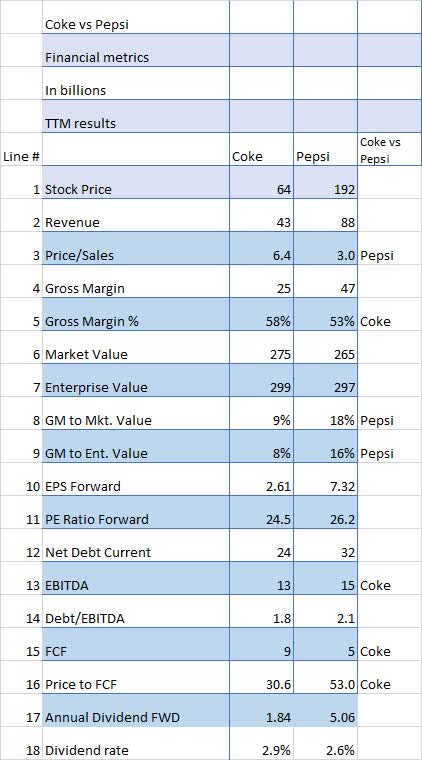
Seeking Alpha and author
Free Cash Flow (Line 15) is also in Coke’s favor as is the Price to FCF (Line 16). This implies Coke generates much more cash per dollar of sales than Pepsi does.
And finally, the dividend rate (line 18) shows both companies about the same in the 2-3% range. We will look at the dividends in more later in this article.
When looking at the Financial Metrics in total, Coke is a better cash flow generator but Pepsi looks to be a bit underpriced relative to Coke.
Based on financial metrics, Coke is the winner, but not by a large margin.
Wall Street analyst ratings show Coke is better liked, but the quant community seems to lean towards Pepsi
Wall Street analysts appear to have relatively strong feelings for KO, with Wall Street plus Seeking Alpha analysts combined showing 23 Buys and only 1 Sell while PEP has 15 Buys and 3 Sells. One thing to note is the 34 combined Holds indicating there is a lot of doubt from analysts about both companies.
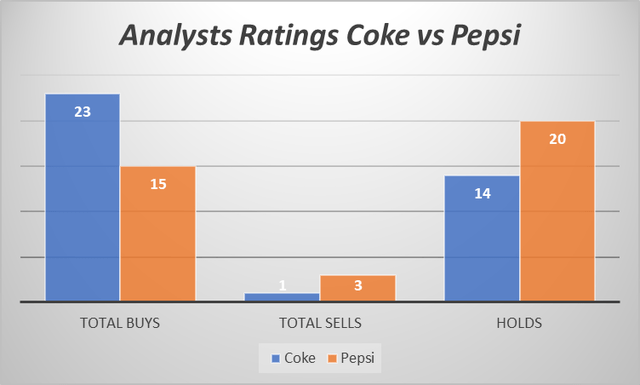
Seeking Alpha and author
Quant ratings over the last year are different, showing nothing but Hold ratings for KO while PEP has, on occasion, earned a Buy recommendation and in fact was rated Strong Buy only 2 weeks ago.
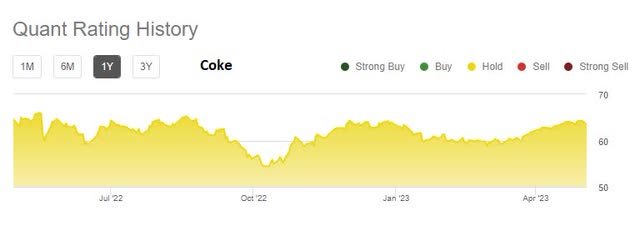
Seeking Alpha
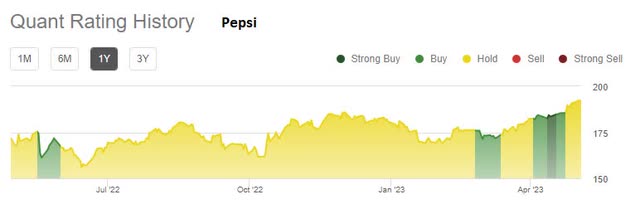
Seeking Alpha
So quants seem to be neutral on KO but seem intrigued by PEP.
Keep in mind that quant ratings have little to do with whether a company is a good dividend stock, especially over the long term.
Dividends and share buybacks
KO has raised its dividend for 60 years in a row and PEP is not far behind having raised its dividend 50 years in a row. Both companies are Dividend Kings.
But looking at the 5-year dividend chart below we can see that KO has raised its dividend from $.39 to $.46 per quarter over the last 5 years an increase of 18%.
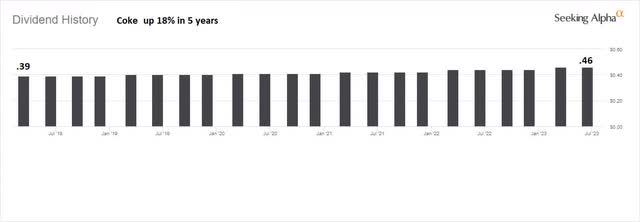
Seeking Alpha
On the other hand, PEP has raised its dividend by 57% over the last 5 years from $.81 to $1.27.
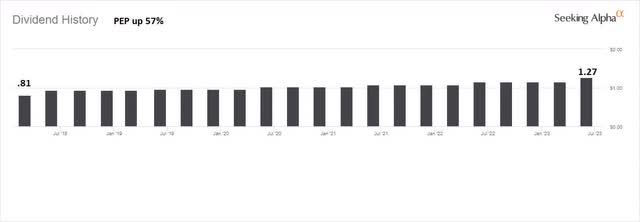
Seeking Alpha
That puts Pepsi’s dividend growth at 7.4% per year, more than twice Coke’s dividend growth rate of 3.5%.
So, if you’re looking for a steady, consistently increasing dividend, Pepsi is the obvious pick.
Share repurchases add to the stability of the dividend because fewer shares mean more dividends per share even if you pay out the same gross dollar amount.
When it comes to share repurchases, Coke has increased its share count by about 1% and Pepsi has decreased its share count by 3% over 5 years.
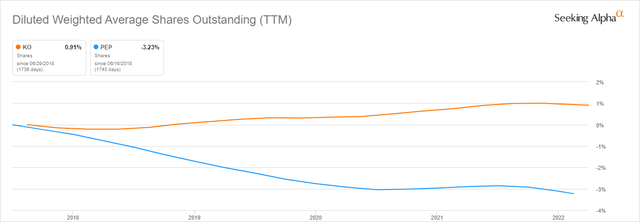
Seeking Alpha
The dividend and share repurchase advantage goes very strongly to Pepsi.
Conclusion
When making decisions about dividend stocks, one of the main considerations has to be how long you plan on holding the stock. Obviously, we know from the dividend paragraph above that KO has increased its dividend for 60 years in a row and that PEP is 50 years in a row. So both companies are solid dividend payers.
Comparing KO and PEP over the last five years on the basis of Total Return (including dividends) shows a significant difference in returns, with PEP up 125% which is 65% more than Coke’s 76% increase.
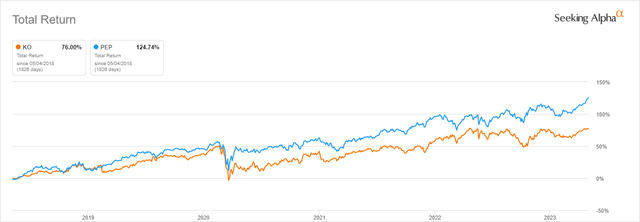
Seeking Alpha
So from the above, Pepsi outshines Coke in terms of growth, dividends, and price performance.
Based upon all of the above, I rate Pepsi stock a Buy and Coke stock a Hold.
Analyst’s Disclosure: I/we have no stock, option or similar derivative position in any of the companies mentioned, and no plans to initiate any such positions within the next 72 hours. I wrote this article myself, and it expresses my own opinions. I am not receiving compensation for it (other than from Seeking Alpha). I have no business relationship with any company whose stock is mentioned in this article.
Seeking Alpha’s Disclosure: Past performance is no guarantee of future results. No recommendation or advice is being given as to whether any investment is suitable for a particular investor. Any views or opinions expressed above may not reflect those of Seeking Alpha as a whole. Seeking Alpha is not a licensed securities dealer, broker or US investment adviser or investment bank. Our analysts are third party authors that include both professional investors and individual investors who may not be licensed or certified by any institute or regulatory body.
If you found this article to be of value, please scroll up and click the “Follow” button next to my name.
Note: members of my Turnaround Stock Advisory service receive my articles prior to publication, plus real-time updates.
